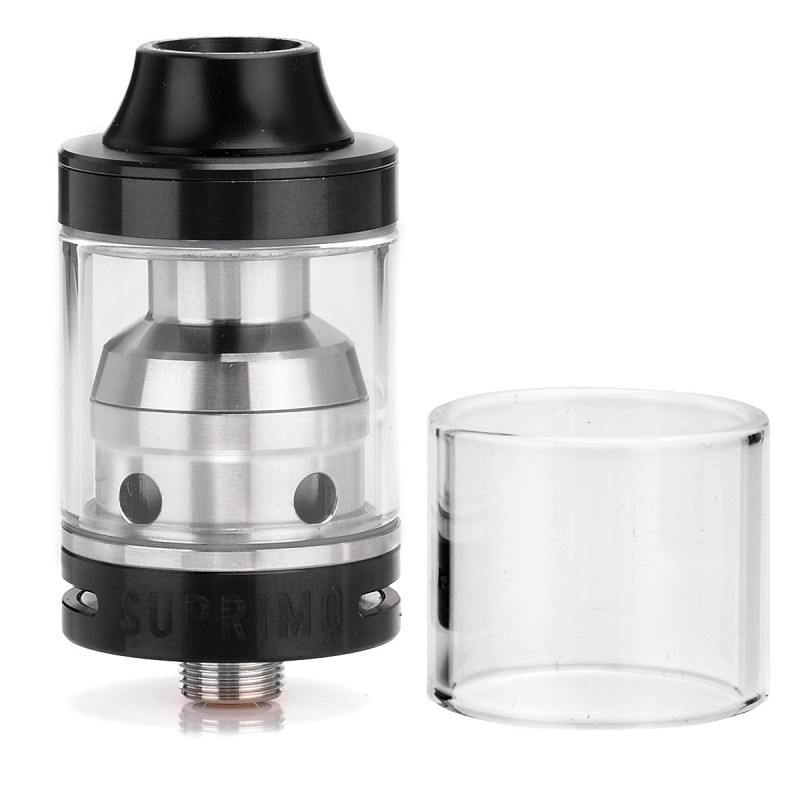In 2015, 68% of adult smokers (in the USA) said they wanted to quit smoking. More than half of them attempted to stop smoking, but only 7.5% were successful. Giving up smoking is one of the hardest things you’ll ever have to do in life. The 7000 odd chemicals found in cigarettes are extremely addictive. A 2012 study even suggests that smoking is more addictive than heroin or cocaine.
So how can you increase your odds of successfully quitting for good?
Being a pack a day smoker of 15 years, I personally struggled to successfully quit smoking using conventional nicotine replacement therapy products such as:
- Patches
- Chewing gum
- Lozenges
- Inhalers
- Medication
You might be in the same boat. Failing multiple times can sew the seeds of doubt that you’ll ever be able to give it up. That’s where you’re wrong. New and exciting ways to quit smoking that you’ve probably never heard of or tried are proving to be highly effective. Even if you’ve used other NRTs to no success.
The ‘Easier’ Way To Quit
I’m sure many of you would have read the Alan Carr quit smoking book titled ‘The Easy Way To Quit Smoking’. It’s sold over 50 million copies worldwide and is even recommended by Ellen Degeneres. This OG quit smoking book was written way back in 1983 and while somewhat relevant, I honestly think it’s a bit outdated.
Life-long tobacco cessation needs to address both physical and psychological addiction. A common theme amongst stop smoking books and smoking cessation programs is the lack of attention to physical addiction. When I say physical addiction, I’m talking about having a smoke while driving, drinking coffee, out with friends at a bar, or after a good meal.
You could trade your physical addiction away for healthier things, but do you really want to? I personally enjoyed the rituals and social aspects of smoking. And I think this is true for many other smokers out there. Furthermore, it helped me deal with my generalized anxiety disorder. It’s reported that 35% of cigarette smokers suffer from a mental illness. This could include anxiety, depression, bipolar, or a variety of other behavioral health problems.
But the simple fact is 69 chemicals found in cigarettes are scientifically proven to cause cancer. So I sought out a healthier alternative. That’s when a close friend of mine introduced me to vaping. I did my own research and discovered that the health risks posed by e-cigarettes are relatively small and I could keep my routine, without as many harmful toxins.
The Best Way To Quit Smoking
In recent years vaping has become the preferred quitting method for smokers. It outranks NRTs and even prescription drugs. Vaping allows you to quit cigarettes on your terms. Not only does vaping appease your nicotine craving, but it also deals with your habits.
Another reason to quit with vaping is just how cost-effective it is. As you become more comfortable with vaping, you can upgrade your device or purchase eliquid separately to save more money! Furthermore, vaping boasts far fewer negative side effects, unlike most over-the-counter cessation products. For example, some NRT’s can cause:
- Skin irritation
- Difficulty sleeping ( vivid dreams )
- Stomach pain
- Dizziness
- Headaches
Vaping does a great job of simulating the hand-to-mouth movement and throat hit every smoker craves. So, if vaping sounds like something you’d like to try, keep reading because we’re going to dive deep into my top 17 tips to stop smoking for good.
17 Tips To Stop Smoking
These tips for giving up smoking are based on interviews done with real people, scientific journals, and also quit smoking resources sourced from substance abuse organizations.
1. Educate Yourself
The first step to quitting smoking is to educate yourself about all the different cessation products available on the market and how effective they are. There are countless methods to quit smoking, so I’ve put together a summary of the most successful ones. This includes:
Cold turkey – This is the most common method that smokers attempt, but also the least effective. Going ‘cold turkey’ essentially means you stop smoking without any form of support. Only about 5% of people will successfully quit by going cold turkey for longer than 6 months.
Behavioral therapy – This can include CBT, ACT, motivational interviewing, mindfulness, positive psychotherapy, and also group therapy. It usually involves talking with a professional about your triggers and working out a plan to cope with your cravings. This is the method that Alan Carr’s book and program covers. Roughly 10%-23% of smokers successfully quit using behavioral therapy.
Nicotine replacement therapy – NRTs come in many shapes and forms. They’re usually associated with over-the-counter products that deliver a limited amount of nicotine into your body via a patch, piece of gum, or inhaler. The reported effectiveness of each product varies between studies but it usually sits around the 14%-25% mark, with a very high chance of relapse within 6 months.
Medication – Most medications prescribed to help smokers quit cigarettes are classified as anti-depressants. They work by blocking certain receptors in your brain that respond to nicotine. The most common medications include Varenicline (Chantix), Bupropion (Zyban), Nortriptyline, and Clonidine. They all boast a reasonable quit rate of 25%-33%.
Vaping – This new cessation product is by far one of the most effective products that you can use to quit smoking. Recent scientific studies done in the UK report a 43% retention rate one year later. It’s also 95% less harmful than smoking. As subsequent studies are done, I’m sure we’ll see more governing bodies and general practitioners recommend vaping, just like they’re already doing in the UK, New Zealand, and Australia.
2. Set A Quit Date
It’s never too late to quit, even later in life. One of the most important steps to quit smoking is to choose a date. Make sure to pick a day that you are going to be busy. Ideally, it would be something physical. The additional serotonin boost can help with your initial withdrawal symptoms. Alternatively, some people prefer to pick a quiet day. It really boils down to your own personal triggers and environment.
3. Make a list
Making a list of all the reasons why you want to quit should be a part of any good quit smoking plan. Put pen to paper or type it out on your smart device. Some common reasons include:
- Live longer
- Be more healthy
- Save money
- For my partner/children
- Look and smell better
- Breathe easier
Any reason to stop smoking is a good reason. So try and not overthink it and just list down anything that comes into your head.
4. Prepare for the day
The most obvious thing to do is to throw away any smoking paraphernalia in your home, car, and workplace. This includes:
- Cigarettes
- Packets
- Pouches
- Lighters
- Matches
- Ashtrays
- Buckets
5. Keep your mouth busy
While vaping does provide a great hand-to-mouth movement, you may crave an additional mouth substitute while quitting. I’d recommend the following:
- Mints
- Gum
- Crunchy fruit
- Crunchy vegetables
- Ice blocks
- Your favorite comfort food
6. Get Support
Having access to people that you can talk to in person or online is very important when attempting any smoking cessation methods. This can include family members, friends, co-workers, or mentors. You should aim to have a support network of 3 or more people.
Studies show that people who engage with social support are 39% more likely to succeed. This is because they can hold you accountable for your actions and reinforce your reasons for quitting.
7. Talk to your GP
While some organizations that represent GP’s support the use of vaping as a cessation method; others don’t. If you live in any of the following progressive countries I’d recommend talking to your GP.
- UK
- Australia
- New Zealand
- Russia
- Germany
- Sweden
- Bulgaria
- Canada
Your GP should be able to list all the benefits of smoking cessation and also recommend stop smoking aids. Be mindful though that some GP’s may not be aware of vaping since it’s a relatively new cessation product.
8. Take one day at a time
The first few days of quitting are always the hardest. Even with these tips to quit smoking, your cravings will be at an all-time high. You’ll feel sick and irritable. Your throat or chest might feel tight and you may also experience anxiety.
This is all normal and you may have experienced these symptoms previously if you’ve tried tobacco cessation before. Try and remember that what you’re thinking and feeling right now isn’t going to be permanent.
9. Celebrate often
Your mindset is very crucial when trying to quit smoking. 63% of people don’t make it past 1 week, so I’d recommend celebrating each and every little milestone. Take a photo, go out to your favorite restaurant, buy yourself a gift. Whatever makes you happy, go and do it!
10. Be present and look to the future
Every cigarette is doing you damage, but every cigarette you don’t smoke is allowing your body to heal. While some health issues may take time to even out, you should be able to see and feel some instant results. This includes:
- Easier to breath
- Taste & smell returns
- Improved circulation
- Less coughing
- Reduced sinus congestion
- Better resistance to getting sick
- Increased energy
11. Manage your withdrawal symptoms
Every smoker experiences a multitude of negative thoughts and feelings while giving up cigarettes. The most prolific will be your withdrawal symptoms. They can be both mental and physical.
Even with the best support network and thorough preparation, withdrawals can take a huge toll on your wellbeing and mental state. The best way to manage them is to identify what type of withdrawal you’re experiencing and to tackle it head-on.
12. Dealing with triggers
Even though you’ve likely removed most of the physical triggers that were in and around your home, you still have to deal with your routines, social obligations, and emotional triggers. Whenever you feel triggered, it’s important to identify it and to apply a solution that works best for you. Common triggers can include:
- Drinking coffee or alcohol
- The smell of smoke
- Driving
- After a meal
- Work breaks
13. Don’t be hard on yourself
Slips and relapses happen. While you’re more likely to successfully quit with vaping versus other methods, there’s still a small chance you’ll fall off the bandwagon occasionally. Make sure that you’re completely transparent with yourself and your support network.
14. Stay active
Physical activity is a free and easily accessible ‘wonder drug’. It not only helps improve your mental wellbeing but also boasts a variety of other physical and mental benefits. Studies show that even 30 minutes of moderate physical exercise can greatly reduce your cravings and withdrawal symptoms.
15. Avoid bargaining
Try to avoid bargaining with yourself or reminiscing about smoking. While a cigarette here and there isn’t the end of the world, it can lead to more substantial deals. If you find yourself in this position, don’t fret, your quitting journey isn’t over. You just need some extra support during this hard time.
16. Have a laugh
Similar to physical exercise, laughing is a natural stress reducer. It can also increase the number of endorphins in your body that in turn helps curve cravings and keeps you focused. Tell a joke, go out to a comedy show or stay at home and put a funny movie on.
17. Try healthier alternatives
If quitting the hard way hasn’t worked, try quitting the easier way. I believe strongly that vaping is the best method to quit smoking. It can’t hurt to try it out. Vaping technology has come a long way from the cig-a-like products that you may be familiar with. The new devices of 2021 are easier to use, cheaper, and much more convenient than ever before!





